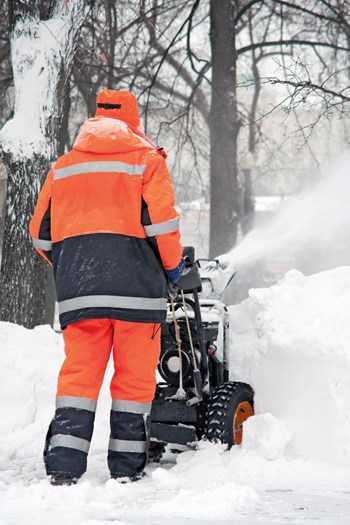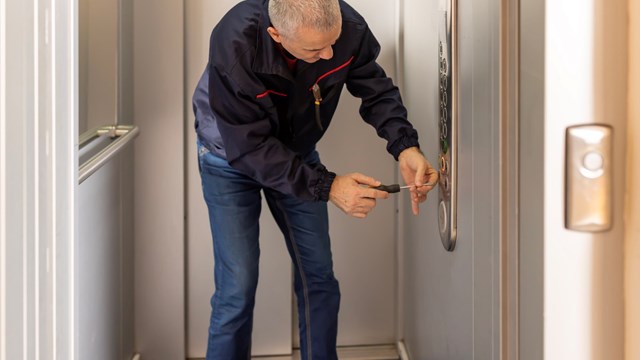
The Massachusetts Supreme Judicial Court has drastically changed premises liability law in the Commonwealth with the issuance of its July 26, 2010 decision in the case of Papadopoulos v. Target Corporation.
The Papadopoulos decision abolishes the longstanding law in Massachusetts that landowners are not liable for injuries on their premises caused by natural accumulations of snow and ice. By abolishing the natural accumulation defense, the Supreme Judicial Court has, in essence, made property owners guarantorsof the safety of all individuals on their property.
Changing the Landscape
Emanuel Papadopoulos sustained a broken pelvis when he slipped and fell on ice in front of a Target department store in Danvers, Massachusetts. The parking lot had been cleared and the snow had been piled into the median strip. Mr. Papadopoulos slipped and fell on ice that either fell off the snow pile or was caused by run-off from the snow pile that had refrozen. He sued Target as well as the landscaping company, Weiss Landscaping Company, Inc., responsible for plowing the parking lot.
Target and Weiss filed a motion for summary judgment at the trial court level, arguing, based upon the longstanding prior decisions of the Massachusetts Appeals Court and Supreme Judicial Court, no liability may attach because the ice was the result of a natural accumulation. The trial court judge agreed and dismissed Mr. Papadopoulos’ case. Counsel appealedto the Appeals Court and the Appeals Court affirmed the entry of summary judgment in favor of Target and Weiss based upon the natural accumulation defense. Papadopoulos then sought review by the Supreme Judicial Court.
Duty of Owner Changed
Between the entry of summary judgment and the filing of the appeal with the Supreme Judicial Court, premises liability law in Massachusetts began to significantly change by placing a greater duty of care upon the landowner. A string of decisions, beginning with the Supreme Judicial Court’s decision in Sheehan v. Roche Bros. Supermarkets, Inc. and culminating in the Appeals Court’s recent Soderberg v. Concord Greene opinion, demonstrates this shift.
These Massachusetts decisions, coupled with decisions in other New England states rejecting the natural accumulation defense, likely moved the Supreme Judicial Court to agree to accept the case on the limited issue of “whether, in a premises liability action involving a slip and fall on snow and ice, the distinction between natural and unnatural accumulations of snow and ice should continue to be a factor under Massachusetts law in determining whether a property owner or other personresponsible for maintaining property has been negligent.”
The Supreme Judicial Court, in a unanimous decision authored by newly-appointed Associate Judge Ralph Gants, abolished Massachusetts’ longstanding distinction between natural and unnatural accumulations of snow and ice. The exception to the general rule of premises liability granted to property owners for snow and ice conditions has been discarded. The dutyowed by a landowner to lawful visitors as to snow and ice hazards is now the same as the duty owed for all other hazards occurring on the property: that of reasonable care.
A property owner owes a duty to lawful visitors to use reasonable care to maintain its property in a reasonably safe condition in view of all of the circumstances. The decision applies retroactively. Thus it appliesnot only to cases presently in litigation but also to those individuals who have sustained injuries due to a slip and fall on snow and ice but have not yet filed suit. Thus an individual whose injury occurred within the past three years [the statute of limitations in these types of cases] can rely upon the Papadopoulos decision.
Natural Accumulation Defense Struck Down
The Court’s decision to discard the natural accumulation defense is based upon its opinion that the “reliance on a distinction between natural and unnatural accumulation has sown confusion and conflict in our case law.” The reason for this confusion is due to the fact that “[d]etermining liability for a slip and fall injury based on whether the plaintiff fell on a natural rather than an unnatural accumulation of snow and ice is not ‘based upon proper considerations.’”
The Court took direct aim at the theory that has long underpinned the natural accumulation defense –that an act of nature cannot create a basis for liability.
The cause of the alleged defect, according to the Court in Papadopoulos, is irrelevant. Relying upon its decision in the Sheehan case, the Court noted that a property owner has a duty to keep the property reasonably safe regardless of the source of the danger. It does not matter whether the defect is an act of nature or the act of another person.
The determining factor as to liability is whether the property owner knew or should have known of the defect and used reasonable care to keep the premisesreasonably safe.
The Court highlighted the confusion and difficulty applying the distinction of natural and unnatural accumulations to those circumstances where snow removal efforts resulted in an injury. In some circumstances, piled snow may still be considered a natural accumulation but the run-off from that pile would be deemed unnatural. Thus there would be no liability if one fell climbing the snow bank. Liability would only attach if one slipped on the ice that formed from the run-off created by the snow bank. Further, no liability could attach where snow had been removed but the naturally-occurring ice underneath the snow remained becausethe ice was a natural accumulation.
Thus, even where the removal efforts created a further risk of mishap, no liabilitycould attach because the removal efforts did not change the natural accumulation into an unnatural accumulation. Such results contravene many of the basic principles of Massachusetts tort law. Due to the inconsistent results created by the natural accumulation distinction, the Court determined a better methodology for determining liability is the traditional premises liability standard.
Eliminating the Obvious Defect Defense
As further justification for discarding the natural accumulation defense, the Court relied heavily upon the Appeals Court’s recent decision in the Soderberg case. The Appeals Court, in Soderberg, eliminated the longstanding open and obvious defect defense.
The open and obvious defect defense held that a property owner is not required to provide warnings to lawful visitors of open and obvious dangers because the warning would be superfluous to an ordinarily intelligent person. The visitor, rather than the property owner, under the theoryowed a duty to use reasonable care under such circumstances.
In Soderberg, the Appeals Court eliminated the open and obvious defense on the grounds that the open and obvious rule does not remove a landowner’s duty to remedy known hazards. In line with the decision in Soderberg, the Court in Papadopoulos determined that even if the snow and ice in the parking lot constituted an open and obvious defect, this fact does not obviate the property owner’s duty to use reasonable care in making the propertyreasonably safe for lawful visitors.
The Court contends that abolishing the natural accumulation defense introduces no special burden on property owners. The obligation for snow and ice removal is now the same as the duty owed to “lawful visitors as to all other hazards: a duty to ‘act as a reasonable person under all of the circumstances including the likelihood of injury to others, the probable seriousness of such injuries, and the burden of avoidingthe risk.’
“If a property owner knows or reasonably should know of a dangerous condition on its property, whether arising from an accumulation of snow or ice, or rust on a railing, or a discarded banana peel, the property owner owes a duty to lawful visitors to make reasonable efforts to protect lawful visitors against the danger.”
A fact-finder will determine what snow and ice removal efforts are reasonable in light of the expense they impose on the landowner and the probability and seriousness of the foreseeable harm to others. “The snow removal expected of a propertyowner will depend upon the amount of foot traffic to be anticipated on the property, the magnitude of the risk reasonably feared, and the burden and expense of snow and ice removal.” Thus the duty of care will vary depending upon the size and activity at a particular condominium or apartment complex.
New Burden on Property Owners
The Court is incorrect in its opinion that its decision places no greater burden uponproperty owners because the decision creates a burden that never previously existed. Property owners were not previously required to protect visitors against natural accumulations of snow and ice. If snow fell throughout the day and evening hours, a property owner need not be concerned about the immediate removal of the snow.
The new standard places a greater onus on the property owner to ensure the snow is removed as soon as possible, lest the removal methods be viewed as unreasonable by a jury. Thus if an overnight snowfall ends at 4:00 a.m. but removal does not begin until 6:30 a.m., this gap could be viewed as unreasonable relative to the person who fell at 6:00 a.m. while leavingfor work. Under the previous standard no liability could attach.
Discouraging Litigation of Snow and Ice Related Claims
From a litigation standpoint, the naturalaccumulation defense, coupled with the open and obvious defense, assisted property owners in two significant ways. First, the significant burden it placed on plaintiffs discouraged litigation of snow and ice related claims. Second, the defenses provided a means to obtain a pre-trial dismissal of the litigation by way of a motion for summary judgment.
The eradication of these defenses servesto eliminate any ability of the property owner to dismiss these cases prior to trial. The result is higher legal costs for insurers because either more cases will go to trial or the insurers will resolve the cases prior to trial by paying settlements to plaintiffs. Thus, cases previously dismissed at the pre-trial stage will now cause insurers to spend significantly more money in legal fees and settlement payments. These costs will undoubtedly be reflected in increased premiums.
Property owners and condominium associations must review their snow removal policies and budgets in light of thePapadopoulos decision. Retaining reliable and insured snow removal contractors, particularly those with experience with snow removal at condominium complexes is imperative. Relying upon volunteer unit residents or friends with plows is risky.
New Documentation Necessary for Contractors
It is also important to speak with the contractor about schedules for snow removal and the importance of promptly responding to requests for snow removal. Require your contractor to keep logs of the dates and times when the snow removal activity occurs in order to establish the reasonableness of the efforts. Inspections of the walkways and parking lots should occur on a daily basis during the winter months to combat accumulations of ice and packed snow on the grounds. Finally, make certain that sand and salt buckets remain filled at all times in various locations on the premises.
The abolishment of the natural accumulation defense represents a sweeping change in Massachusetts premises liability law. The early interpretations of this new law by judges and juries will likely be bumpy and may result in adverse results in cases that were previously slam-dunk victories for property owners.
In an effort to minimize these risks, property owners and condominium associations must take heed of the change in the law and take the necessary steps to maintain their premises and eliminate potential hazards caused by snow and ice.






Leave a Comment